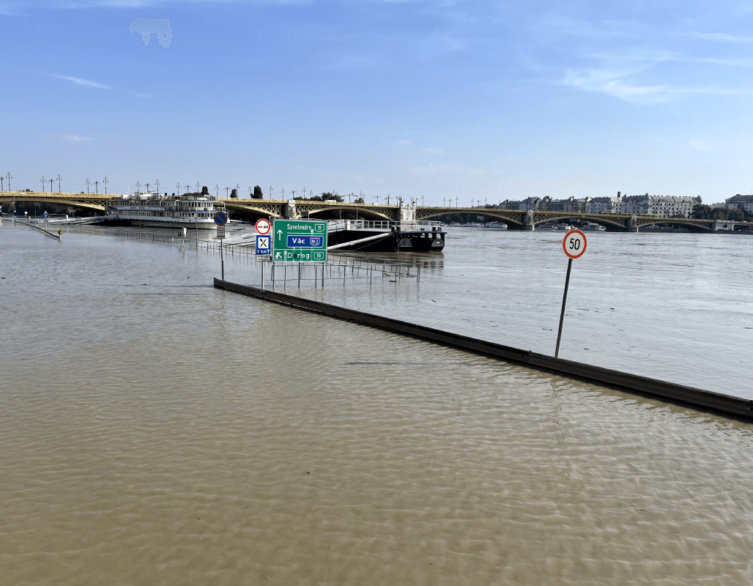Floods Predicted to Become More Frequent Due to Climate Change

Climate change is a global phenomenon that has far-reaching consequences, one of which is the increased frequency and severity of floods. As the Earth’s temperature rises, the atmosphere can hold more moisture, leading to more intense rainfall events. This, coupled with changes in land use and urbanization, has resulted in a higher risk of flooding in many parts of the world.
The Great Flood of Budapest
The Great Flood of Budapest in 1838 was one of the most devastating natural disasters in the history of the Hungarian capital. The catastrophe began on the night of March 13th when the Danube River, swollen by heavy rainfall and melting ice, burst through the city’s defenses and inundated the low-lying areas of Pest and Buda.
The flood was preceded by weeks of unusually cold weather, which had caused ice to accumulate on the river. As temperatures began to rise in early March, the ice started to break up and flow downstream. However, a massive ice jam formed near the island of Csepel, south of Budapest, which caused the water to back up and overflow the riverbanks.
The floodwaters first breached the embankment near the Vigadó Concert Hall in Pest, and then broke through the dikes at Vác and Soroksár. The water rushed into the city from three directions, submerging entire neighborhoods and sweeping away houses built of adobe and other flimsy materials. In the Belváros (Inner City) district, the water reached a height of 203 centimeters, while in Ferencváros and Józsefváros it rose to 260 and 216 centimeters, respectively.
The destruction was immense. Of the 4,254 houses in Pest, 2,281 were completely destroyed, while in Buda 601 buildings were reduced to rubble. An estimated 50,000 to 60,000 people were left homeless, and 153 lives were lost. The rescue efforts were led by Baron Miklós Wesselényi, who organized teams of boatmen to evacuate residents from the flooded areas.
The ice jam at Csepel held back the floodwaters for two days before finally giving way on the night of March 15th. The released water then rushed downstream, devastating everything in its path for a distance of 20 kilometers along the left bank of the Danube.
In the aftermath of the flood, the city adopted new regulations for flood protection, while the Hungarian Parliament passed a law in 1840 calling for the construction of dikes and the regulation of the Danube River. The Great Flood of 1838 remains a defining event in the history of Budapest, a stark reminder of the destructive power of nature and the importance of preparedness and resilience in the face of disaster.
The Flood That Broke Half of Europe
In June 2013, Budapest experienced the highest water levels ever recorded on the Danube River, surpassing the previous record set in 2006. On June 9th, the water level reached 891 centimeters in the early afternoon, breaking the all-time record. The river broke records along its entire length between the capital and the Austrian border, and experts expected similar results south of Budapest as well. Due to the river regulations in the 19th century, it is difficult to determine if a single flood wave has ever brought more water on the Danube, but many experts believe so. However, it is certain that the 2013 flood was one of the most severe in history, not only in Hungary but throughout Central Europe.
The high water levels caused disruptions in transportation and infrastructure throughout Budapest. Boat services were suspended, and several tram and bus lines were restricted. The Batthyány Square metro station on the M2 line was closed, and the civil defense gates were shut. In Szentendre, a mobile wall made of flexible metal was built along the Danube promenade after the old dam was demolished in 2012. This was the first time a mobile wall was used in Hungary.
The flood also caused significant issues in other parts of Hungary and Europe. In Esztergom, the Mária Valéria Bridge and the Bottyán Bridge were closed, while in Győr, the Petőfi Bridge and the Kossuth Bridge were shut down. In Tahitótfalu, a temporary dam burst, but a second line of defense was able to protect the town. However, the settlement became inaccessible due to the flooding of the main road.
Throughout the country, over 10 million sandbags were used, containing more than 242,500 cubic meters of sand. More than 36,000 registered civilian volunteers worked on the dams, though the actual number of volunteers was much higher. Approximately 206,000 people were directly threatened by the flood, and 1,570 individuals had to be evacuated.
The Budapest Sewerage Works (FCSM) was well-prepared for the flood, having closely monitored the hydrometeorological processes in the catchment area since the beginning of the year. The main flood defense activities included closing floodgates, building temporary dams using sandbags and tube dams, and managing flood phenomena at various locations throughout the city.
Despite the record-breaking water levels, Budapest was successfully protected from the flood, with all hazards being identified and managed in a timely manner. Sewage drainage and treatment continued to function without interruption throughout the city. The most critical areas, such as Margaret Island, the Pünkösdfürdő area, and the Buda side of the Danube between Margaret Bridge and Chain Bridge, were continuously monitored, and flood phenomena were localized.
Best deals of Budapest
The 2013 flood was one of several high-water events in the past decade, with four out of the six floods exceeding 800 centimeters occurring between 2002 and 2013. This trend suggests that similar floods are likely to occur in the future, and preparations are being made to face these challenges.
The Autumn Flood in Budapest in 2024
During autumn of 2024 another massive flood hit Budapest, causing widespread damage and disruption throughout the Hungarian capital and other parts of Europe. The flood, triggered by the Boris cyclone, a powerful weather system that brought heavy rainfall and strong winds to the region, resulted in the highest water levels ever recorded on the Danube River.
The Boris cyclone formed due to a combination of three key meteorological factors: a significant temperature contrast between the cooler air behind an incoming cold front and the extremely warm air mass filling the Mediterranean region, the cyclone-forming effect of the Alps, and the high moisture content in the air. These conditions led to the development of the intense cyclone, which remained nearly stationary over the region for several days.

photo by cacor
As a result of the cyclone, an extraordinary amount of precipitation fell on the upper catchment area of the Danube River for nearly seven days. In Austria, the Czech Republic, and southwestern Poland, many areas received over 200 millimeters of rain within just a few days. The most severe situation occurred in Lower and Upper Austria, where larger areas recorded more than 300 millimeters of precipitation, accompanied by strong or stormy northerly winds.
The heavy rainfall led to record-breaking water levels on the Danube River, causing severe flooding in Budapest and other cities along its banks. Hungary suffered extensive damage to infrastructure, homes, and businesses, with many areas left underwater for days. Emergency services and the Hungarian military worked tirelessly to evacuate residents, provide aid, and reinforce flood defenses.
Even though it suffered severe disruption, Budapest managed to fight off the flood, and protect the city and its residents from the harm.
The impact of the floods was not limited to Hungary; other European countries along the Danube River, such as Austria, Slovakia, and Serbia, also experienced significant flooding and damage. The event highlighted the need for improved flood management strategies and international cooperation in the face of increasingly extreme weather events driven by climate change.
In the aftermath of the floods, the Hungarian government and the European Union pledged significant funds to support the recovery and reconstruction efforts in Budapest and other affected areas. The 2024 autumn floods serve as a stark reminder of the devastating impact that extreme weather events can have on communities and the importance of preparedness and resilience in the face of a changing climate.
More Frequent Floods In The Future
Climate change is expected to exacerbate the risk of flooding in the coming years. Rising global temperatures lead to more evaporation, which in turn leads to more moisture in the atmosphere. This moisture can then fall as heavy rainfall, often in short, intense bursts that overwhelm drainage systems and cause flash floods. Additionally, changes in land use, such as deforestation and urbanization, can reduce the land’s ability to absorb water, further increasing the risk of flooding.
To mitigate the impact of floods, it is essential to adopt a multi-faceted approach. This includes investing in flood prevention infrastructure, such as levees and flood barriers, as well as improving drainage systems and creating more green spaces to absorb excess water. Early warning systems and evacuation plans are also crucial to minimize the loss of life during flood events.
Furthermore, addressing the root cause of the problem – climate change – is of utmost importance. This requires a global effort to reduce greenhouse gas emissions and transition to a more sustainable way of life. By taking action to mitigate climate change, we can help reduce the frequency and severity of floods in the future.
In conclusion, the increasing frequency of floods due to climate change is a serious concern that demands attention and action. The devastating floods in Budapest in 1838 and 2024 serve as sobering reminders of the power of nature and the need for effective flood management strategies. By investing in flood prevention measures, improving our understanding of the risks, and addressing the underlying causes of climate change, we can work towards a safer and more resilient future for all.
Image source: cacor
Related news
























